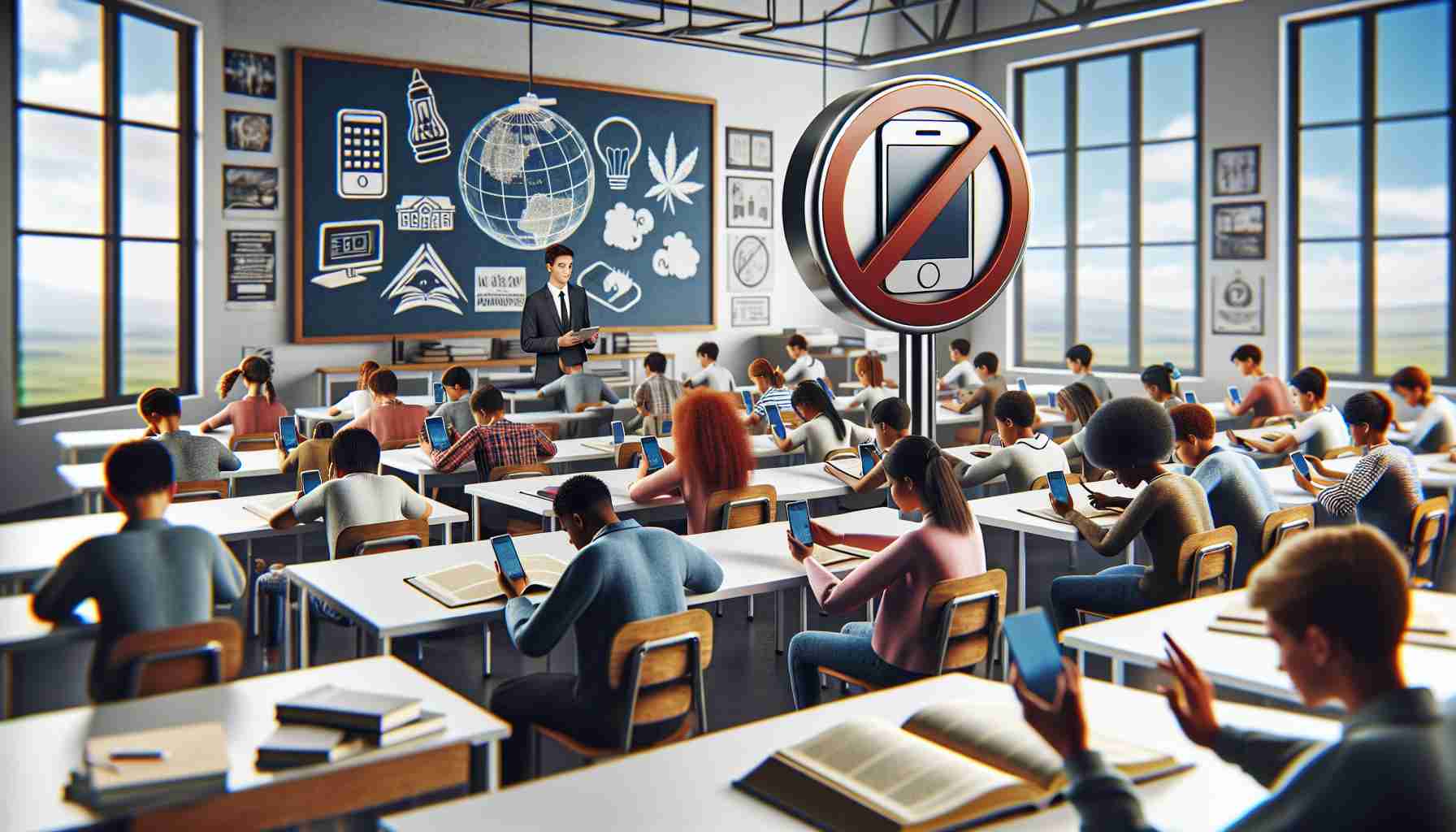As the new academic year begins in Italy, significant changes are being implemented regarding the use of smartphones in educational settings. Minister of Education Giuseppe Valditara has mandated an outright ban on mobile phones for students up to junior high, a move rooted in concerns about the impact of technology on learning and social development.
In an official directive released last summer, Valditara emphasized the importance of fostering effective learning environments free from distractions. To support this, the policy strictly prohibits the use of smartphones by students in early education through the first cycle of schooling, allowing exceptions solely for specific educational needs governed by personalized educational plans.
This initiative aims to combat what the minister describes as the potential addiction to smartphones among youth, promoting active engagement in their communities instead. Previously, there were instances where teachers could authorize phone usage; however, this new policy eliminates that flexibility entirely.
Students who do not comply with the regulations may face disciplinary measures. While some schools have previously introduced smartphone management programs to educate young users on responsible digital communication, the current strategy emphasizes outright prohibition.
In light of this significant shift, a survey is being conducted to gauge public opinion on the smartphone ban. The survey, while not scientifically rigorous, aims to capture sentiments surrounding this educational policy, inviting feedback from the community about its effectiveness and implications.
Smartphone Ban in Schools: A New Approach to Education
As schools continue to navigate the complexities of technology in education, a growing number of institutions around the globe are implementing smartphone bans akin to Italy’s recent initiative. This shift reflects broader educational movements aimed at enhancing student focus and social interaction.
Key Questions Raised by the Smartphone Ban
1. What are the primary goals of implementing a smartphone ban in schools?
The primary goal is to minimize distractions that smartphones create, thereby fostering improved academic performance and better interpersonal skills among students. By limiting smartphone use, educators hope to encourage deeper engagement with curricula and in-person socialization.
2. How do proponents of the ban justify their stance?
Proponents argue that excessive smartphone use contributes to declining attention spans, mental health issues, and reduced academic performance. By removing phones from the equation, schools can create a more focused learning environment, allowing students to engage fully with educational content.
3. What evidence exists to support the effectiveness of such bans?
Research suggests that environments with limited technology use correlate with improved test scores and social behaviors. Some studies indicate that students can achieve higher levels of concentration and retention when not distracted by their devices.
Challenges and Controversies Surrounding the Ban
Despite the potential benefits, the smartphone ban has ignited debates about student autonomy and modern educational practices. Key challenges include:
– Resistance from Students and Parents: Many students and parents view smartphones as essential tools for learning and communication. The outright ban may be viewed as an infringement on personal freedoms, leading to pushback from those who believe that responsible use should be taught rather than restricted.
– Equity Concerns: In some cases, students utilize smartphones for crucial learning resources or to communicate with family regarding transportation and emergencies. Banning smartphones may put students at a disadvantage, especially if alternatives are not made available.
– Inconsistent Implementation: With schools left to interpret the ban’s details, there may be inconsistencies in enforcement, leading to confusion among students and staff about what is allowed.
Advantages of the Smartphone Ban
– Enhanced Focus: By removing distractions, students can concentrate better on lessons and classroom activities.
– Improved Social Skills: With less reliance on digital communication, students may socialize more effectively, developing critical interpersonal skills.
– Encouragement of Active Learning: The absence of smartphones compels students to engage with traditional learning materials and participate more fully in discussions.
Disadvantages of the Smartphone Ban
– Technological Disconnect: Students might miss out on opportunities to learn digital literacy and tech skills in an increasingly digital world.
– Parental Communication: Bans may complicate communication between students and parents, particularly during emergencies or logistical issues.
– Lack of Responsibility Training: By banning smartphones outright, there’s less opportunity for students to learn responsible usage and self-regulation.
In conclusion, while the smartphone ban in schools seeks to promote a more focused and enriching educational experience, its effectiveness and impact remain hotly debated. Policymakers and educators must navigate these challenges to strike a balance between technological integration and traditional learning environments.
For more information on educational policies and technology in schools, visit Edutopia.




























